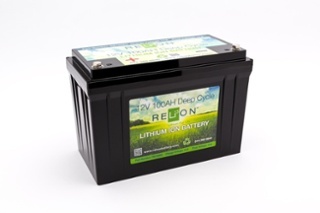 Achieving a battery’s optimal performance is a lot like compromising in a new relationship; you have to be willing to give and take in equal amounts. Too much or too little of either, and you can create dangerous operating conditions where the battery has a tendency to behave erratically or underperform.
Achieving a battery’s optimal performance is a lot like compromising in a new relationship; you have to be willing to give and take in equal amounts. Too much or too little of either, and you can create dangerous operating conditions where the battery has a tendency to behave erratically or underperform.
However, performing proper battery maintenance allows you to avoid these snafus while simultaneously capitalizing on a battery’s longevity and usefulness.
Your maintenance habits can affect the lifespan of a lithium-ion battery and its lead acid batterycounterpart in numerous ways. And, all other parameters equal, lithium-ion batteries often have fewer maintenance responsibilities than lead acid batteries, which make them a more intuitive power solution.
Performing lithium-ion battery maintenance
This lower maintenance requirement directly correlates to how lithium-ion batteries work.
Lithium-ion batteries operate by moving charged lithium ion slurry back and forth between a cathode and an anode during the charge and discharge cycles. In a perfectly controlled environment, this mechanism should theoretically provide an infinitely stable power source. But cycling, temperature changes, aging and other environmental stimuli will decrease the battery’s performance over time, and eventually the battery needs replacing.
Because of this eventual lifespan depreciation, lithium ion battery manufacturers take a conservative approach when specifying the life of consumer or industrial lithium-ion batteries. The average lifespan range for consumer batteries is between 300 and 500 charge/discharge cycles, and then the industrial range alters drastically depending on the charge voltages.
Maximizing the number of full cycles and battery capacity is mainly dependent on usage and the operating environment. Luckily, the maintenance to address these factors is fairly straight forward.
Although lithium-ion batteries have a relatively high temperature threshold compared to lead acid batteries, the technology is still negatively affected by excessive heat and by keeping a battery fully charged over a prolonged time period.
Generally, once the lithium-ion battery reaches a passive temperature hotter than 30°C it’s considered to be in an excessively elevated temperature, which will lower the lifespan on the device. Preventing the battery’s internal temperature during storage and cycling from reaching this temperature range will help prevent this.
The other factor to consider is charge voltage. Lithium-ion batteries in consumer devices like laptops and cell phones are charged at a rate of 4.20 volts per cell, which gives maximum capacity. However, this can decrease the total lifespan because it’s higher than the 4.10V/cell voltage threshold. The industry solution is to lower the charge voltage. Although lowering the voltage will decrease the battery capacity (roughly 10 percent less capacity for every 70mV reduction), reducing peak charge voltage by 0.10V/cell can double the battery’s cycle life.
For example, Battery University states that if the battery is charged to only 4.10V/cell, the life can be prolonged to 600–1,000 cycles; 4.0V/cell should deliver 1,200–2,000 and 3.90V/cell should provide 2,400–4,000 cycles. Through their testing and experts, the battery education resource has discovered an optimal charge voltage is 3.92V/cell
If you’re concerned about the lower capacity threshold, charging the lithium-ion battery at peak charge voltage will restore full capacity.
Those two steps are the key components in industrial lithium-ion battery maintenance.
Performing lead-acid battery maintenance
Compared to lithium-ion batteries, flooded lead acid batteries have higher maintenance requirements and fewer operational opportunities. Lithium-ion batteries are able to operate in any orientation, but flooded lead acid batteries must be oriented upright to prevent electrolyte leakage, offer room for gas ventilation and give easy access to maintain electrolyte levels. This orientation requirement limits the number of operational uses, increases the time and cost required on maintenance and the chance for something to go wrong resulting in reduced capacity and life.
Since gases must be released from flooded lead-acid batteries and leakage is also possible if over-filled with water, they also require physical maintenance. Acid mist and liquid will gather around the connectors, and the battery needs to be physically cleaned using a concoction of baking soda and water. Failing to keep these connectors clean can cause severe corrosion around the terminal connectors compromising the connections which will degrade power efficiency and connectivity, and even corrode the battery and its housing. Maintaining a proper fluid level is also crucial for lead acid batteries. If the fluid drops past an acceptable level exposing the plates, the battery capacity will decrease and ultimately the battery will cease functioning because electrolytes are unable to travel between the cathode and anode. When it comes to fluid level, the opposite is also possible. Overfilling the battery cells can push excess electrolytes from the battery, especially during charging and in warm temperatures when the water heats and naturally expands.
Regardless of what maintenance techniques you employ, most lead acid batteries also offer less voltage output, and nearly half the lifespan of a lithium-ion battery.
Overall, lithium-ion batteries offer more opportunities at less of a hassle than their lead acid counterparts. Get in touch with us to learn more about how RELiON’s lithium-ion technology can revitalize your energy needs, and ween you off of depending on an outdated battery technology.